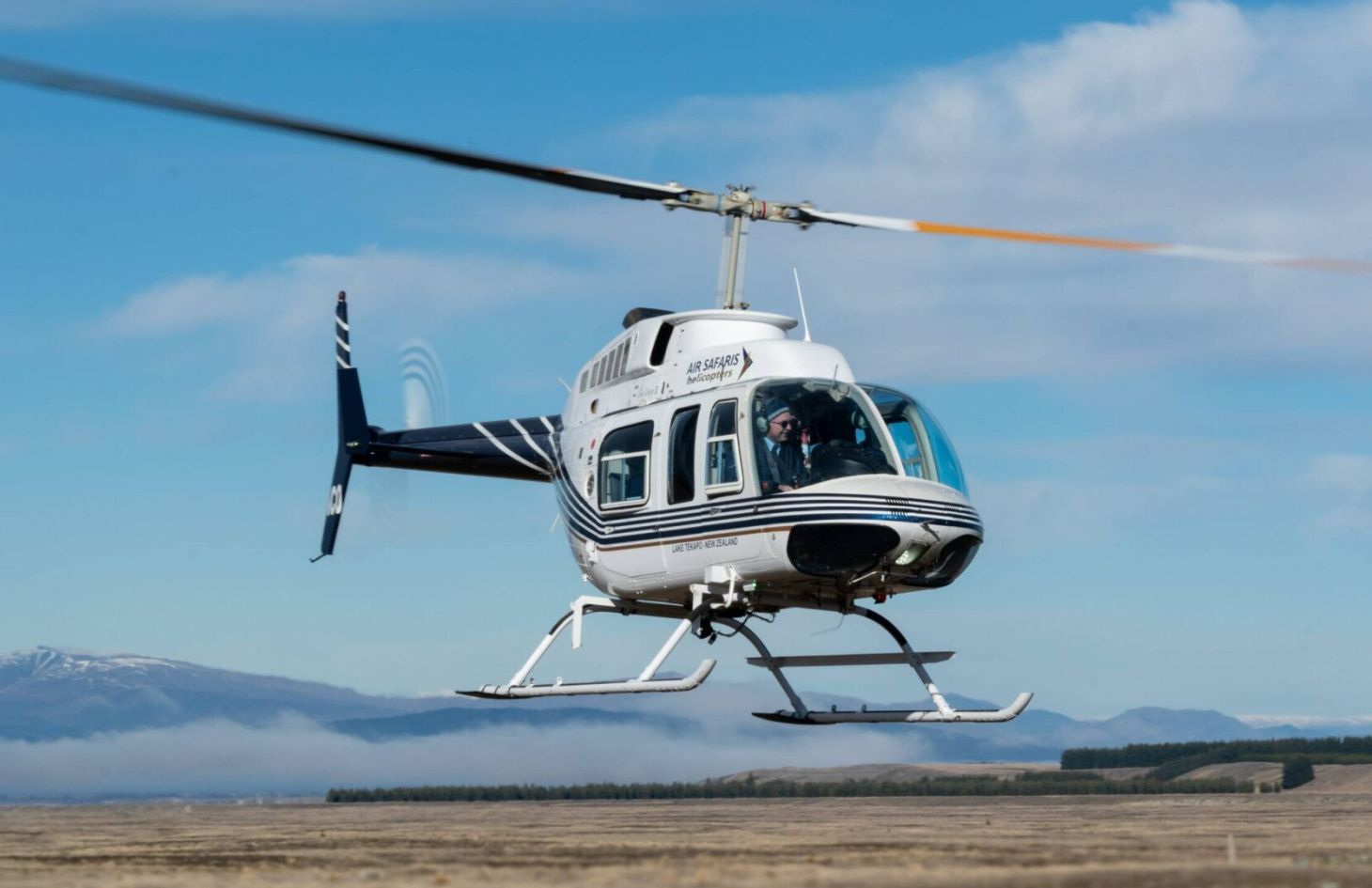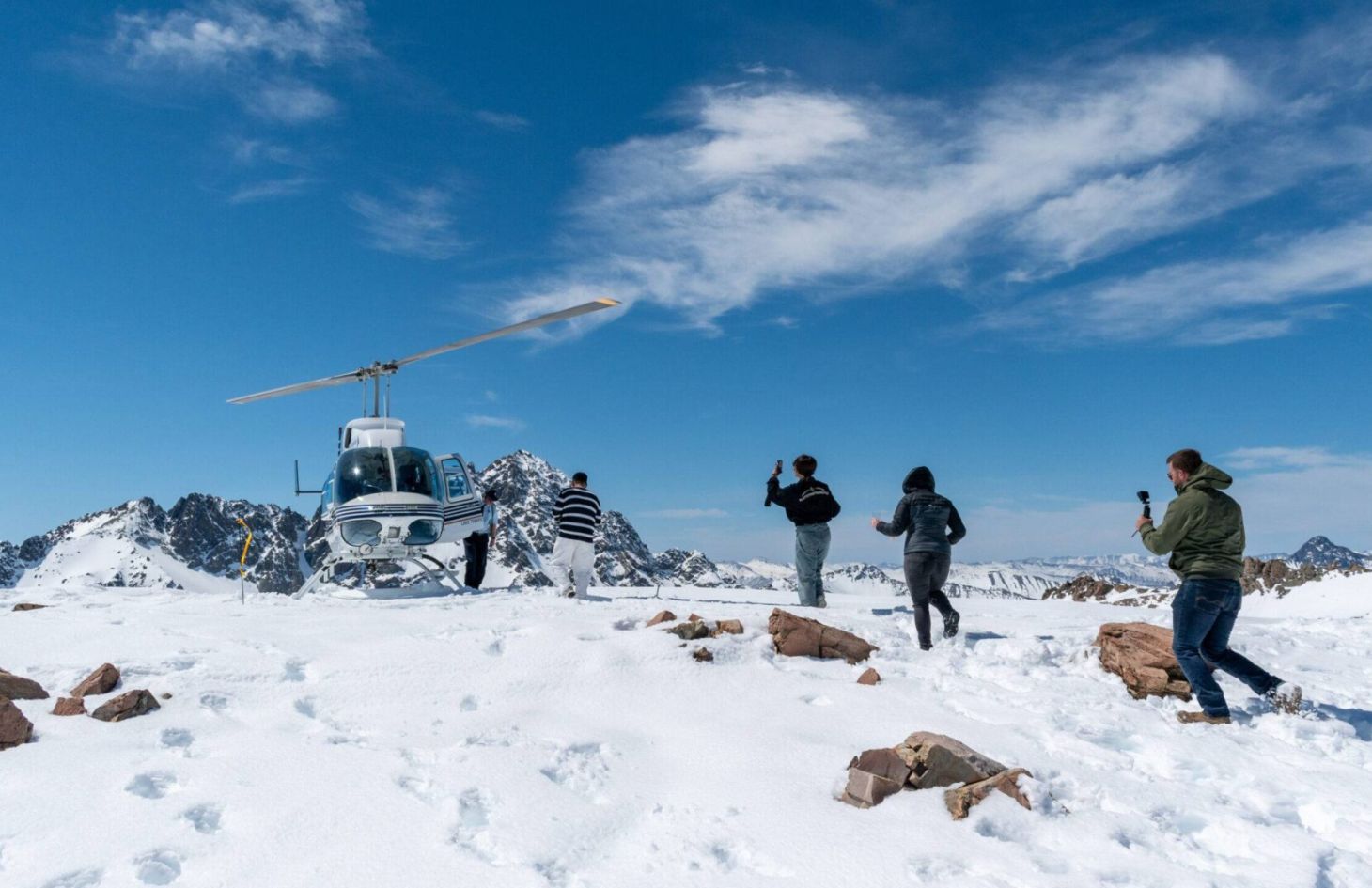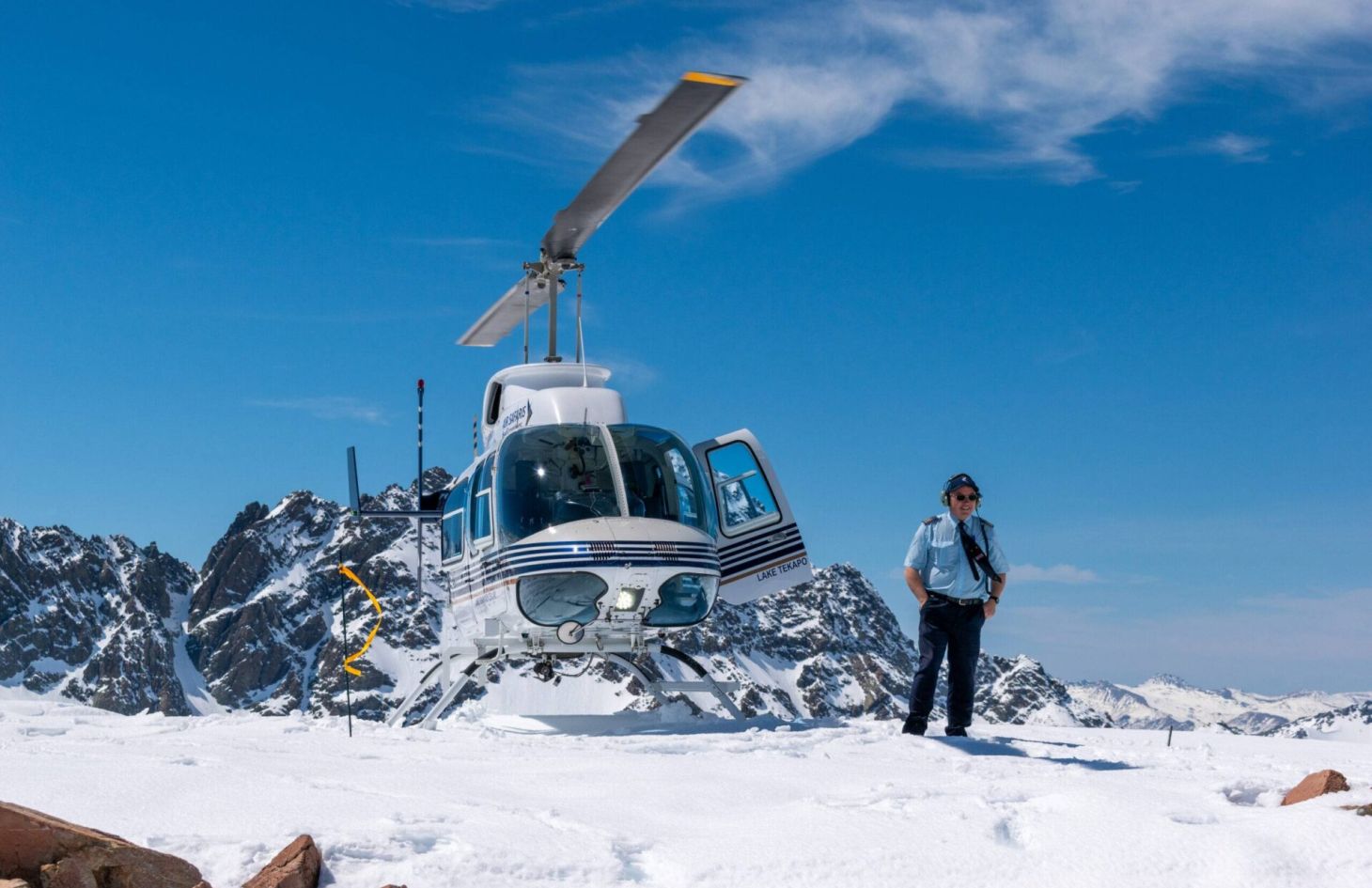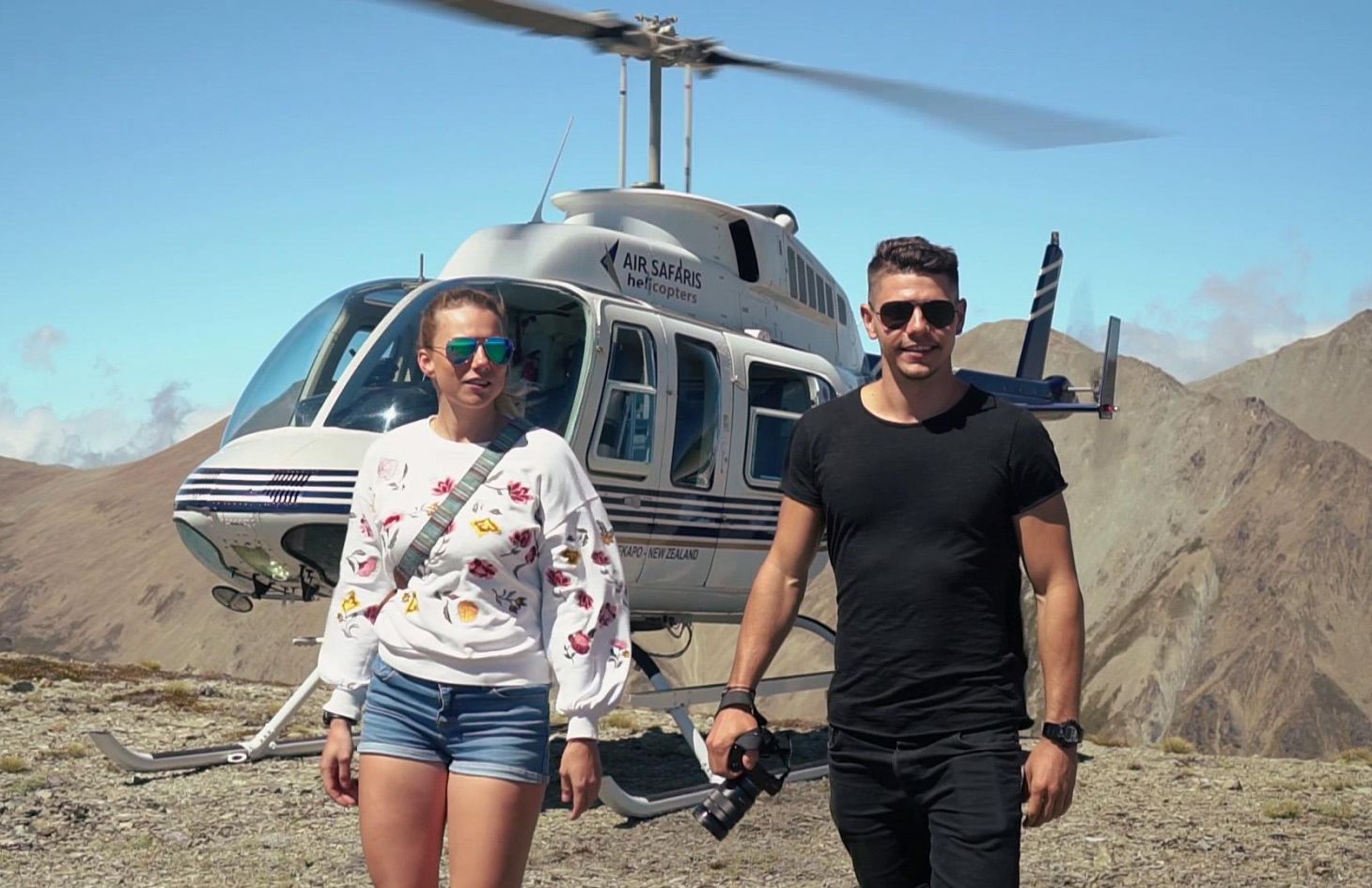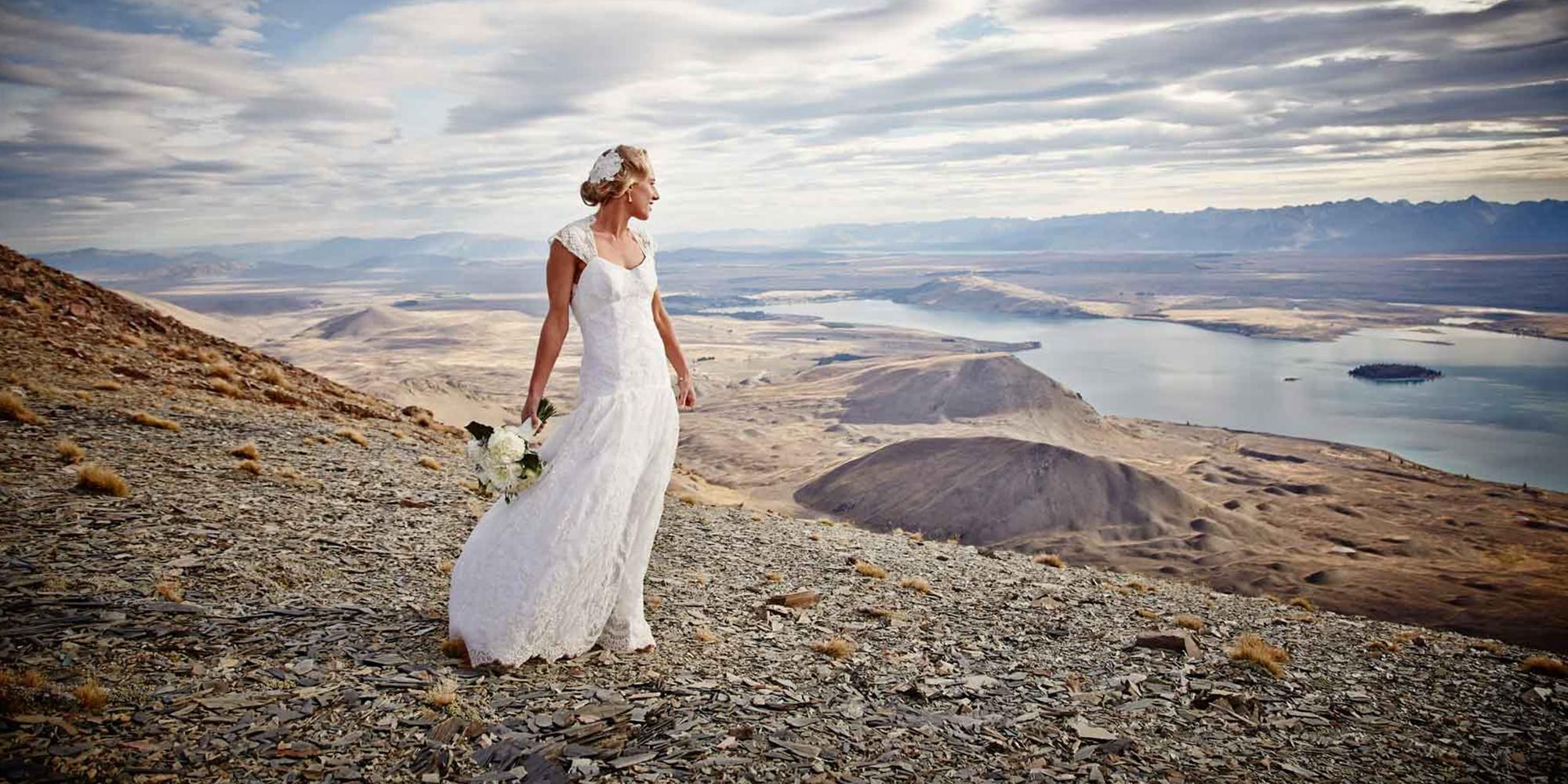Scenic Flights
Helicopter Flights
– Lake Tekapo
See all our options below!
*Infant fares apply to children up to 2 years.
*Child fares apply to children that are between 3 – 13 years.
*Prices valid from 1st October 2025 to 30th September 2026.
| Adult | Child | ||
|---|---|---|---|
MACKENZIE EXPLORER: MOST POPULAR / RECOMMENDED! 30 MINUTES | NZ$395 | NZ$315 Infant: NZ$195 | Book |
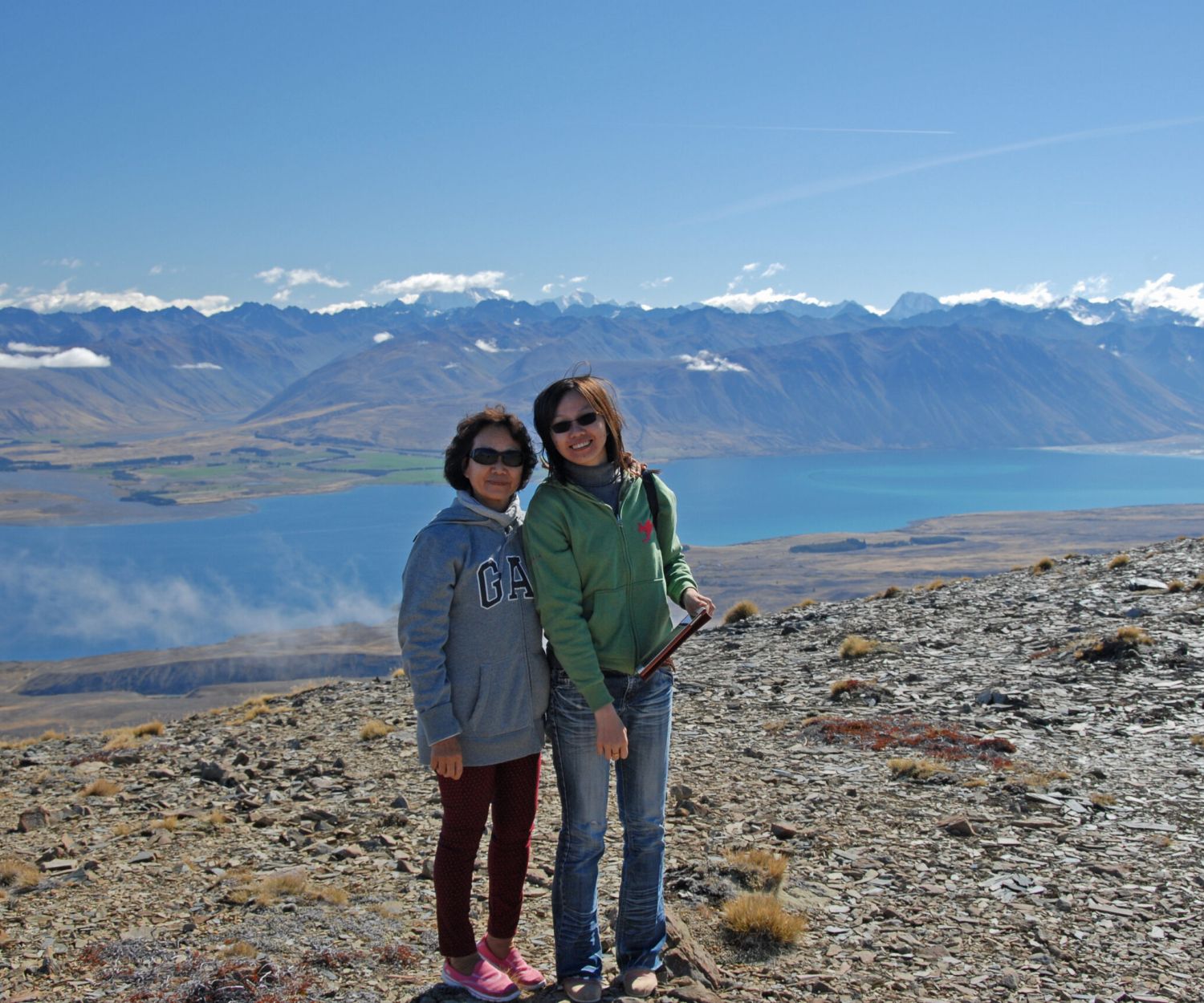
Join us for an awesome experience showing off the very best of the Mackenzie with an alpine landing high on one of our local Sheep Stations to enjoy stunning views of Lake Tekapo and the mountains. In winter this flight offers an awesome “snow landing” experience.
One of our most popular helicopter flights, the “Mackenzie Explorer” is a great experience summer or winter.
Highlights include:
-
Seeing the turquoise blue water of beautiful Lake Tekapo and the local rivers that fed into the lake.
-
Flying around Lake Tekapo Village
-
Mt John Observatory
-
Mt Hay, Glenmore & Godley Peaks High Country Sheep Stations – see the family homesteads and higher up hill country where the merino sheep roam
-
Experience a wonderful alpine landing at 5500′ (snow only in winter months) to get the chance to get out and take in panoramic views of the lakes and mountains.
-
Lake Alexandrina with it’s fresh spring fed water contrasting starkly with glacial fed Lake Tekapo
-
Ancient glacial deposits including massive “erractics” left behind as ice melted during the last ice-age
The exact route can vary due to weather conditions on the day of your flight.
There is a maximum weight restriction of 130kg per person
| Adult | Child | ||
|---|---|---|---|
MOUNT COOK ALPINE GRANDEUR 45 MINUTES | NZ$625 | NZ$500 Infant: NZ$295 | Book |

This flight by helicopter is a totally unique experience taking you from Tekapo, winding through our remote alpine valleys all the way right up close to mighty Aoraki / Mount Cook at over 3724 meters. Learn all about our high country areas before crossing into the Mount Cook National Park for some amazing views of our highest peaks and longest glaciers.
Included in the flight is a snow landing on Liebig Dome (7700′) to enjoy a panorama view of Aoraki Mount Cook and surrounding mountains. ** snow may be limited in Feb – March.
Highlights include:
-
Seeing the turquoise blue water of beautiful Lake Tekapo and the local rivers that fed into the lake.
-
Mt John Observatory.
-
Glenmore & Godley Peaks High Country Sheep Stations.
-
Wind your way through the steep, rugged mountains and passes of the Cass, Fork and Jollie Valleys, home to the merino sheep. Your pilot will tell you all about how these sheep are farmed and show you the remote musterers huts.
-
Look down into dense milky waters of the Tasman Terminal lake at the bottom of the Tasman Glacier.
-
Marvel at the large icebergs below an the Tasman river formed by the melting ice as it flows down into Lake Pukaki.
-
Wonderful panoramic views across towards Aoraki Mount Cook & Mount Tasman.
-
Cross the lower part of the Murchison glacier to the Liebig Range.
-
Experience a wonderful alpine snow landing on Liebig Dome at 7700′ (landing location can change depending on weather conditions – your pilot will advise on the day) to get the chance to get out and take in panorama views of Aoraki Mount Cook National Park, or if you prefer take the totally unique opportunity to land at one of the remote musterers huts in the Cass Valley on Glenmore Sheep Station. Snow may be limited in the middle of summer from Feb – March.
-
Lake Alexandrina with it’s fresh spring fed water contrasting starkly with glacial fed Lake Tekapo.
-
Ancient glacial deposits including massive “erractics” left behind as ice melted during the last ice-age.
The exact route can vary due to weather conditions on the day of your flight.
There is a maximum weight restriction of 130kg per person.
| Adult | Child | ||
|---|---|---|---|
MOUNT COOK FRANZ AND FOX MAGIC 60 MINUTES | NZ$850 | NZ$680 Infant: NZ$395 | Book |

On our longest helicopter flight, this 60 minute experience will take you from Tekapo, winding through our remote alpine valleys all the way right up close to mighty Aoraki / Mount Cook at over 3724 meters. Learn all about our high country areas before crossing into the Mount Cook National Park for some amazing views of our highest peaks and longest glaciers. You will then traverse over the Southern Alps and take in views of the Franz and Fox glaciers, before crossing back east for your snow landing.
Included in the flight is a snow landing on Liebig Dome (7700′) to enjoy a panorama view of Aoraki Mount Cook and surrounding mountains. ** snow can be limited Feb – March
Highlights include:
-
Seeing the turquoise blue water of beautiful Lake Tekapo and the local rivers that feed into the lake.
-
Mt John Observatory.
-
Glenmore & Godley Peaks High Country Sheep Stations.
-
Wind your way through the steep, rugged mountains and passes of the Cass, Fork and Jollie Valleys, home to the merino sheep. Your pilot will tell you all about how these sheep are farmed and show you the remote musterers huts.
-
Look down into dense milky waters of the Tasman Terminal lake at the bottom of the Tasman Glacier.
-
Marvel at the large icebergs below an the Tasman river formed by the melting ice as it flows down into Lake Pukaki.
-
Traverse around Aoraki Mount Cook and Mount Tasman, crossing into the Tai Poutini National Park to get stunning close up views of the Franz and Fox glaciers.
-
Cross the mid Tasman and Murchison glaciers with ice stretching over 10 kilometers in both directions.
-
Experience a wonderful alpine snow landing on Liebig Dome at 7700′ (landing location can change depending on weather conditions – your pilot will advise on the day) to get the chance to get out and take in panorama views of Aoraki Mount Cook National Park, or if you prefer take the totally unique opportunity to land at one of the remote musterers huts in the Cass Valley on Glenmore Sheep Station. During the middle of summer snow is limited Feb – March
-
Lake Alexandrina with it’s fresh spring fed water contrasting starkly with glacial fed Lake Tekapo.
-
Ancient glacial deposits including massive “erractics” left behind as ice melted during the last ice-age.
The exact route can vary due to weather conditions on the day of your flight.
There is a maximum weight restriction of 130kg per person
| Adult | Child | ||
|---|---|---|---|
TEKAPO HIGHLIGHTS 15 MINUTES | NZ$290 | NZ$230 Infant: $140 | Enquire |

Have you ever wanted to experience the thrill of being in a helicopter but always thought it was too expensive? Well this is just the flight for you.
Jump in and make sure you have your camera ready while we take you for a magic flight around Lake Tekapo.
Highlights include:
-
Seeing the turquoise blue water of beautiful Lake Tekapo and the local rivers that feed into the lake.
-
Flying around Lake Tekapo Village
-
Mt John Observatory
-
Glenmore & Godley Peaks High Country Sheep Stations
-
Lake Alexandrina with its fresh spring-fed water contrasting starkly with glacial fed Lake Tekapo
-
Ancient glacial deposits including massive “erractics” left behind as ice melted during the last ice-age
There is a maximum weight restriction of 130kg per person.
| Per person | ||
|---|---|---|
Air Safaris Combo Deal | NZ$850 | Enquire |
Helicopter Mackenzie Explorer + Aeroplane Grand Traverse – the best of both worlds. Allow 2 hours for this incredible, highly recommended experience.
Price is per person, no child fare available (minimum 4 persons).


Air Safaris
Lake Tekapo Airport
The Lake Tekapo Airport was built here in 1974 by Air Safaris. This is the main base for the company and the departure point for all our east coast customers.
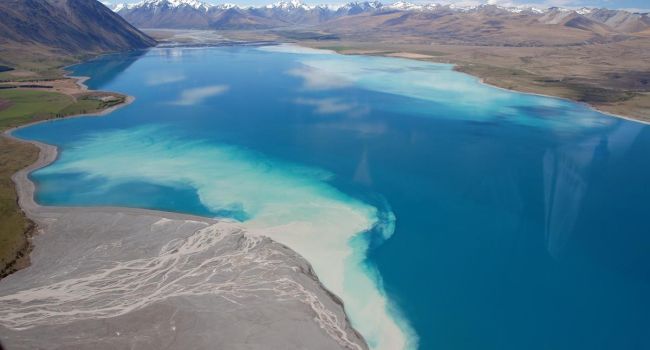
Lake Tekapo
Lake Tekapo covers the first part of your Air Safaris Grand Traverse. Glaciers grinding against rock produce a fine powder called “rock flour”. When washed into the lake this is what produces the stunning turquoise colour. Lake Tekapo is 120m deep and has an average temperature of 7 degrees C. In the summer months it is popular for boating, water sports and trout and salmon fishing.
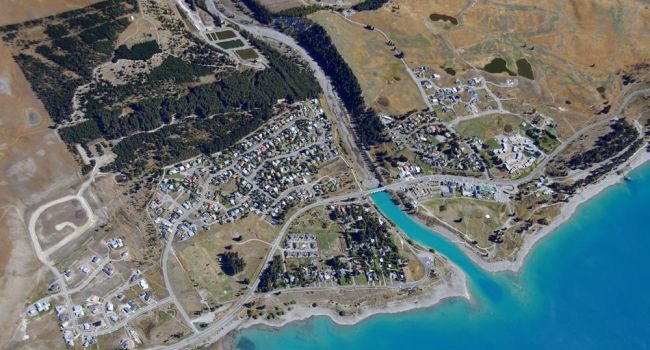
Lake Tekapo Village
Nestled around the southern shoreline of Lake Tekapo, the village is home to approximately 350 permanent residents. The Village itself is built on old glacial terminal moraine and is surrounded by unique glacial features which become obvious from the air.

Mount John
Dominating the skyline to the west of Lake Tekapo is Mt John – a classic example of a Roche Moutonnée (harder bed-rock sculptured by advancing glacial ice). Mt John is home to the Mt John Observatory housing New Zealand’s biggest telescope (1.8 meter MOA). Built in the 1960’s the observatory is now mainly used for research purposes by the Canterbury University.

Mount Hay Sheep Station
Mount Hay Station is a 10,500ha South Island sheep farm on the edge of Lake Tekapo right next to the Round Hill Ski area.
Mt Hay Station runs 5,000 merino because they’re the only stock sturdy enough to survive the hard country.

Mount Ardmore
Mt Ardmore is one of our alpine landing sites on the eastern side of Lake Tekapo, a remote mountain with amazing views right over Lake Tekapo. (This is very popular with our wedding and engagement photography packages).
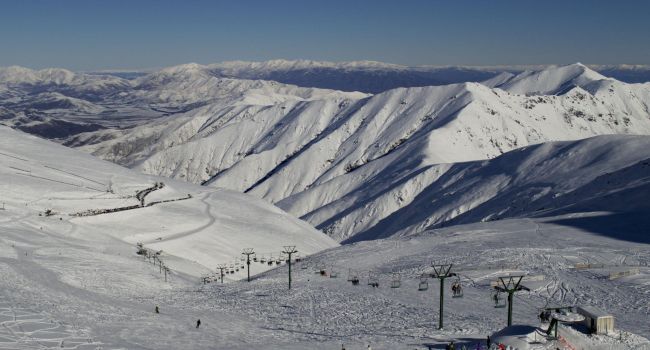
Mt Dobson Ski Area
Mt Dobson Ski Area is located in the Two Thumb mountain range east of Lake Tekapo village. It’s a perfect for all abilities with all day sun and a range of trails and lifts. The winter ski season runs from late June to early October.
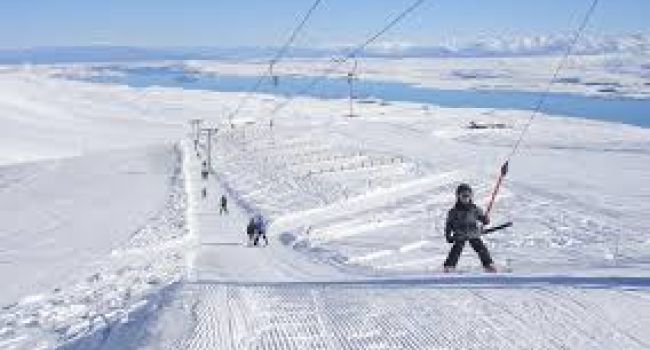
Roundhill Ski Area
Roundhill Ski Area is located 35 minutes from Lake Takapo Village. This family friendly Ski Area has panoramic views of Lake Tekapo and trails to suit all levels of ability.
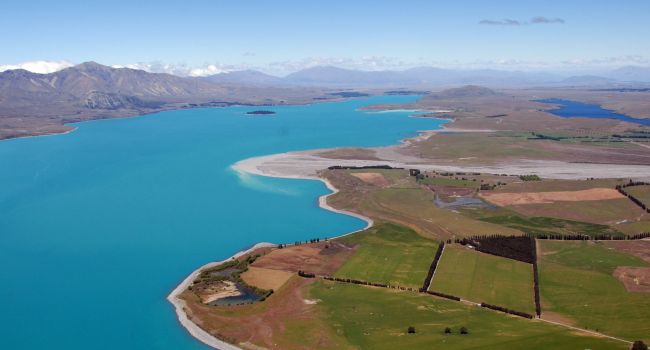
Godley Peaks Sheep Station
This high country sheep station is 50 000 acres in size. They farm approximately 10,000 Merino sheep. They Graze high on the mountains during summer and are mustered on foot by shepherds and their dogs to the lower country for the winter months, to protect from the deep winter snows.
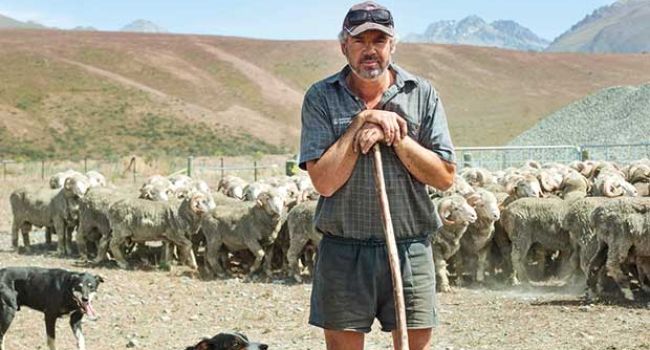
Glenmore Sheep Station
Glenmore Station occupies 19,000-odd hectares, rising from the western shore of Lake Tekapo to the border of the Aoraki/Mt Cook National Park. An award-winning merino property (with deer and beef), it has its feet in the water and its head in the snowy peaks.
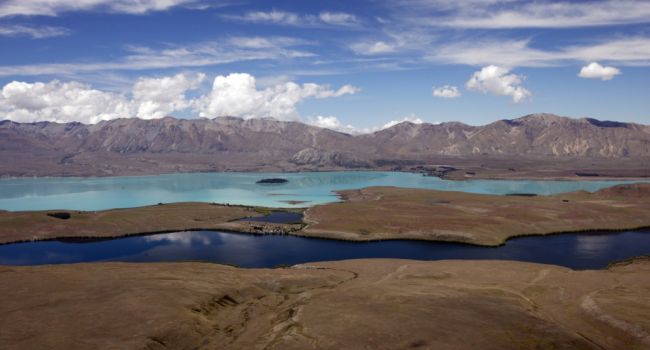
Lake Alexandrina
Famous for Rainbow and Brown trout fishing, this springfed lake provides a striking contrast to the turquoise-blue glacial water of Lake Tekapo. The lake is one of New Zealand’s Scenic Reserves with over 40 species of bird within it’s biologically rich catchment.

Mount Joseph
Mt Joseph is another of or landing sites, in the winter we are able to offer snow landings on here and in the summer alpine landings, this has a great view down over the Mackenzie Basin.
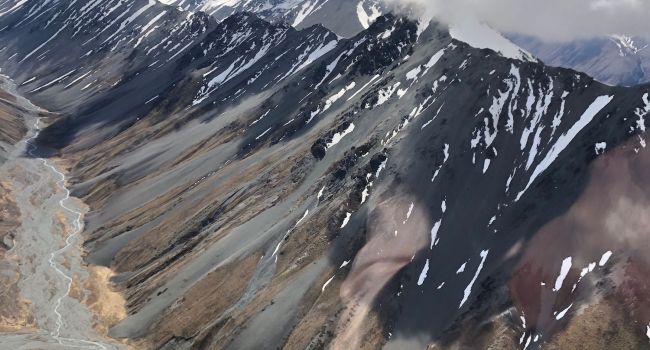
Cass Valley
The Cass Valley lies to the west of Lake Tekapo between the Liebig and Hazsard Ranges. It’s a popular area for hiking and 4wd in summer and ski touring in the winter. The Cass River was named after Thomas Cass, the chief surveyor in Canterbury between 1851 and 1867.

Jollie Valley
The Jollie River is a river of New Zealand’s Southern Alps. It flows an almost straight course from its source in the Liebig Range 15 kilometres (9 mi) east of Aoraki/Mount Cook, flowing into the Tasman River 5 kilometres (3 mi) from the latter’s outflow into Lake Pukaki.
Alpine Hut
Waterfall Hut

Tasman Terminal Lake
The icebergs, which are clearly visible from the air, have taken about 500 years to travel from the Neve at the top of the Tasman Glacier to where they appear today. Underneath this lake the ice is still over 200 meters thick.

Mount Cook Village
Under the highest mountain in New Zealand, the Aoraki/Mount Cook alpine village sits amongst sky-scraping peaks, phenomenal glaciers, permanent snow and all beneath a stunning star-studded sky.
The village itself provides a range of accommodation from an international style hotel to motels, backpackers and camping.
Aoraki/Mount Cook National Park surrounds the village, which is in excess of 700km with glaciers covering 40% of the land.
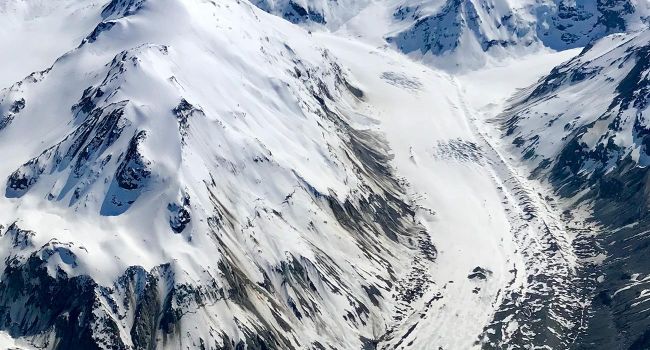
Murchison Glacier
16 kilometers long, the Murchison is New Zealand’s second longest glacier. Flowing in parallel valleys, the Tasman and Murchison Glaciers are separated by the Malte Brun range, dominated by Mt Malte Brun at 10,400′ (3,170m).
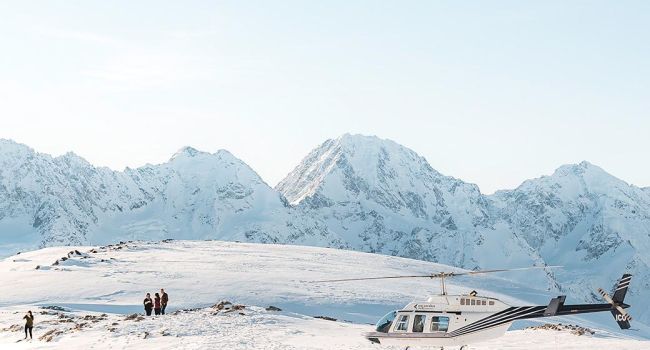
Liebig Dome
Liebig Dome is one of our snow landing sites nestled right up in amongst the Southern Alps of New Zealand, sitting at almost 8000 feet high and with its backdrop being Aoraki Mt Cook, this makes this mountain a very popular landing site.
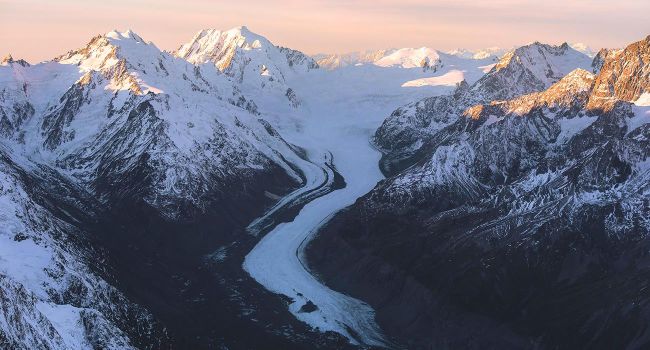
Tasman Glacier
29 kilometres long with ice up to 800m deep, The Tasman is easily New Zealand’s longest glacier. Moraine (rock and gravel scraped or fallen from the valley walls) covers the ice for much of its length. At it’s terminus a glacial lake 150m deep and lined with ice, feeding into the huge braided Tasman River and then into Lake Pukaki.

Mount Tasman
Known as a classic ice-climb, Mt Tasman is New Zealand’s second highest mountain. It was first climbed in January 1895 by Mathias Zurbriggen. The Balfour icefall and glacier descends off its western flanks.
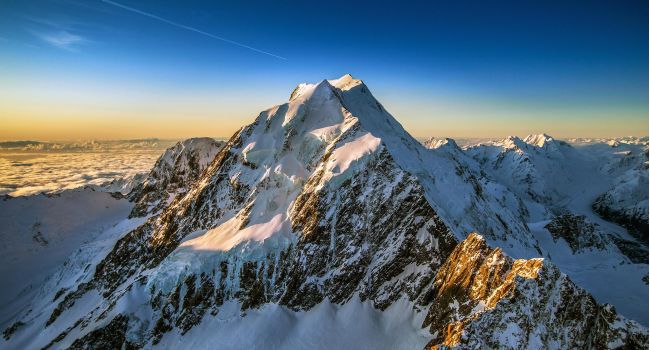
Aoraki Mount Cook
‘Aoraki’ – the cloud-piercer! New Zealand’s highest mountain stands supreme with its snow and ice-fields spilling into the glaciers below. It was first climbed on Christmas Day 1894 by locals Tom Fyfe, George Graham and 19 year old Jack Clarke. In 1991 a giant rock avalanche occurred on Mt Cook lowering the highest peak by 20m. An estimated 14 million cubic meters of rock and debris, travelled 7.3km from its source at an approximate speed of 400-600 km/hr.
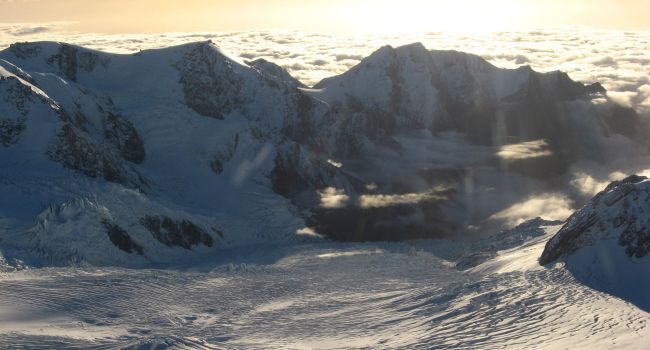
Franz Josef Glacier
Nestled in the Westland National Park you will find the Franz Josef Glacier. At the head of the glacier is the beatiful Geike snowfield, famous for high altitude cross country skiing. Plummeting steeply westward, this magnificent ‘river of ice’ descends almost to the Tasman sea at a recorded rate of up to 4 meters per day.
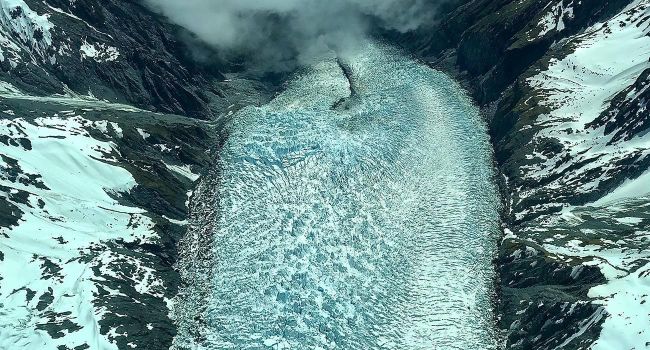
Fox Glacier
The Maori name for the Fox Glacier is “Te Moeka o Tuawe” this was derived from the ancestor Tu Awe who fell to his death while exploring the area. The bed of the glacier was his finial resting place and it is said that when his lover, Hine Hukatere wept, the bed of the Fox and Franz glaciers filled with her everlasting tears of ice.
-
![]()
Air Safaris
Lake Tekapo AirportThe Lake Tekapo Airport was built here in 1974 by Air Safaris. This is the main base for the company and the departure point for all our east coast customers.
-
![]()
Lake Tekapo
Lake Tekapo covers the first part of your Air Safaris Grand Traverse. Glaciers grinding against rock produce a fine powder called “rock flour”. When washed into the lake this is what produces the stunning turquoise colour. Lake Tekapo is 120m deep and has an average temperature of 7 degrees C. In the summer months it is popular for boating, water sports and trout and salmon fishing.
-
![]()
Lake Tekapo Village
Nestled around the southern shoreline of Lake Tekapo, the village is home to approximately 350 permanent residents. The Village itself is built on old glacial terminal moraine and is surrounded by unique glacial features which become obvious from the air.
-
![]()
Mount John
Dominating the skyline to the west of Lake Tekapo is Mt John – a classic example of a Roche Moutonnée (harder bed-rock sculptured by advancing glacial ice). Mt John is home to the Mt John Observatory housing New Zealand’s biggest telescope (1.8 meter MOA). Built in the 1960’s the observatory is now mainly used for research purposes by the Canterbury University.
-
![]()
Mount Hay Sheep Station
Mount Hay Station is a 10,500ha South Island sheep farm on the edge of Lake Tekapo right next to the Round Hill Ski area.
Mt Hay Station runs 5,000 merino because they’re the only stock sturdy enough to survive the hard country.
-
![]()
Mount Ardmore
Mt Ardmore is one of our alpine landing sites on the eastern side of Lake Tekapo, a remote mountain with amazing views right over Lake Tekapo. (This is very popular with our wedding and engagement photography packages).
-
![]()
Mt Dobson Ski Area
Mt Dobson Ski Area is located in the Two Thumb mountain range east of Lake Tekapo village. It’s a perfect for all abilities with all day sun and a range of trails and lifts. The winter ski season runs from late June to early October.
-
![]()
Roundhill Ski Area
Roundhill Ski Area is located 35 minutes from Lake Takapo Village. This family friendly Ski Area has panoramic views of Lake Tekapo and trails to suit all levels of ability.
-
![]()
Godley Peaks Sheep Station
This high country sheep station is 50 000 acres in size. They farm approximately 10,000 Merino sheep. They Graze high on the mountains during summer and are mustered on foot by shepherds and their dogs to the lower country for the winter months, to protect from the deep winter snows.
-
![]()
Glenmore Sheep Station
Glenmore Station occupies 19,000-odd hectares, rising from the western shore of Lake Tekapo to the border of the Aoraki/Mt Cook National Park. An award-winning merino property (with deer and beef), it has its feet in the water and its head in the snowy peaks.
-
![]()
Lake Alexandrina
Famous for Rainbow and Brown trout fishing, this springfed lake provides a striking contrast to the turquoise-blue glacial water of Lake Tekapo. The lake is one of New Zealand’s Scenic Reserves with over 40 species of bird within it’s biologically rich catchment.
-
![]()
Mount Joseph
Mt Joseph is another of or landing sites, in the winter we are able to offer snow landings on here and in the summer alpine landings, this has a great view down over the Mackenzie Basin.
-
![]()
Cass Valley
The Cass Valley lies to the west of Lake Tekapo between the Liebig and Hazsard Ranges. It’s a popular area for hiking and 4wd in summer and ski touring in the winter. The Cass River was named after Thomas Cass, the chief surveyor in Canterbury between 1851 and 1867.
-
![]()
Jollie Valley
The Jollie River is a river of New Zealand’s Southern Alps. It flows an almost straight course from its source in the Liebig Range 15 kilometres (9 mi) east of Aoraki/Mount Cook, flowing into the Tasman River 5 kilometres (3 mi) from the latter’s outflow into Lake Pukaki.
-
Alpine Hut
Waterfall Hut -
![]()
Tasman Terminal Lake
The icebergs, which are clearly visible from the air, have taken about 500 years to travel from the Neve at the top of the Tasman Glacier to where they appear today. Underneath this lake the ice is still over 200 meters thick.
-
![]()
Mount Cook Village
Under the highest mountain in New Zealand, the Aoraki/Mount Cook alpine village sits amongst sky-scraping peaks, phenomenal glaciers, permanent snow and all beneath a stunning star-studded sky.
The village itself provides a range of accommodation from an international style hotel to motels, backpackers and camping.
Aoraki/Mount Cook National Park surrounds the village, which is in excess of 700km with glaciers covering 40% of the land.
-
![]()
Murchison Glacier
16 kilometers long, the Murchison is New Zealand’s second longest glacier. Flowing in parallel valleys, the Tasman and Murchison Glaciers are separated by the Malte Brun range, dominated by Mt Malte Brun at 10,400′ (3,170m).
-
![]()
Liebig Dome
Liebig Dome is one of our snow landing sites nestled right up in amongst the Southern Alps of New Zealand, sitting at almost 8000 feet high and with its backdrop being Aoraki Mt Cook, this makes this mountain a very popular landing site.
-
![]()
Tasman Glacier
29 kilometres long with ice up to 800m deep, The Tasman is easily New Zealand’s longest glacier. Moraine (rock and gravel scraped or fallen from the valley walls) covers the ice for much of its length. At it’s terminus a glacial lake 150m deep and lined with ice, feeding into the huge braided Tasman River and then into Lake Pukaki.
-
![]()
Mount Tasman
Known as a classic ice-climb, Mt Tasman is New Zealand’s second highest mountain. It was first climbed in January 1895 by Mathias Zurbriggen. The Balfour icefall and glacier descends off its western flanks.
-
![]()
Aoraki Mount Cook
‘Aoraki’ – the cloud-piercer! New Zealand’s highest mountain stands supreme with its snow and ice-fields spilling into the glaciers below. It was first climbed on Christmas Day 1894 by locals Tom Fyfe, George Graham and 19 year old Jack Clarke. In 1991 a giant rock avalanche occurred on Mt Cook lowering the highest peak by 20m. An estimated 14 million cubic meters of rock and debris, travelled 7.3km from its source at an approximate speed of 400-600 km/hr.
-
![]()
Franz Josef Glacier
Nestled in the Westland National Park you will find the Franz Josef Glacier. At the head of the glacier is the beatiful Geike snowfield, famous for high altitude cross country skiing. Plummeting steeply westward, this magnificent ‘river of ice’ descends almost to the Tasman sea at a recorded rate of up to 4 meters per day.
-
![]()
Fox Glacier
The Maori name for the Fox Glacier is “Te Moeka o Tuawe” this was derived from the ancestor Tu Awe who fell to his death while exploring the area. The bed of the glacier was his finial resting place and it is said that when his lover, Hine Hukatere wept, the bed of the Fox and Franz glaciers filled with her everlasting tears of ice.
Helicopter Route Map
Marriage Proposals – We have a fantastic spot over looking Lake Tekapo, get the helicopter to yourself and a bottle of bubbly to celebrate.
Up to 45mins away.-
MACKENZIE EXPLORER
Red Line
30 mins – Alpine Landing
(min 4 pax) -
MOUNT COOK ALPINE
GRANDEURYellow Line
45 mins – Snow Landing
(min 4 pax) -
MOUNT COOK FRANZ
AND FOX MAGICOrange Line
60 mins – Snow Landing
(min 4 pax)
Helicopter Route Map




